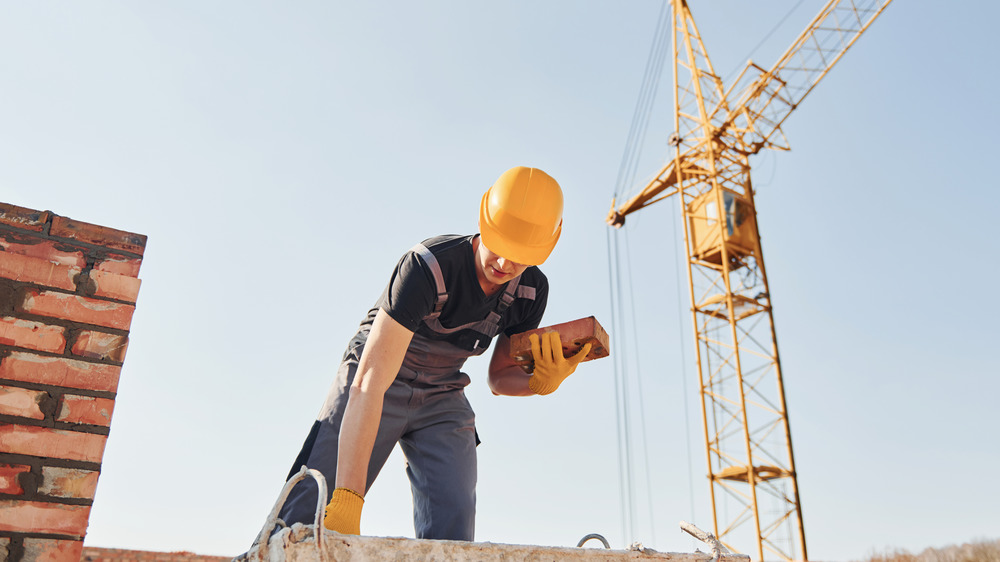Published
4 years agoon
By
Joe Pee
One disturbing fact from the BLS report showed 2019 to be the deadliest for workers since 2007. There were 5,333 fatal injuries in the workplace in 2019. To put it more bluntly: Someone died every 99 minutes from a work-related injury. So what was the deadliest job? Fishing and hunting workers. (More on that later.) Here’s a breakdown of the most dangerous jobs yet:
Be nice to the people cutting your grass; their job is not only backbreakingly hard, but has also killed many people. MoneyTalks reported those working in grounds maintenance see 19.8 deaths per 100,000 employees, making it the 10th most dangerous job. And when compared to other occupations, those working in this industry see 3.5 deaths per 100,000 equivalent workers. It makes sense, as the BLS report said contact with objects or equipment is one of the main reasons for injuries. Contact with equipment may also be why working in agriculture is dangerous.
CONSTRUCTION IS VERY DANGEROUS

Agriculture is the ninth most dangerous job on the BLS list. The fatal injury rate for farmers, ranchers, and other agricultural workers numbered at 23.2 deaths per 100,000 workers. Its rate compared to other jobs is the same as grounds maintenance, at 3.5 deaths per 100,000 employees.
If you’ve looked up at a building under construction and thought, yeah, nope, never going to do that, well, that’s a good instinct. Falls, slips, and trips caused more than 880 work-related fatalities in 2019. This means jobs where people work at heights are more at risk from these injuries. Structural iron and steel workers saw 26.3 deaths in 2019. This also includes steelworkers in mills that make steel for buildings and roads. Construction helpers account for 40 deaths per 100,000 workers, making it the fifth most dangerous job. This includes those who work at tall buildings and even in construction sites where some injuries have happened. And because we’re talking about how dangerous being on top of buildings is, roofers have the fourth most hazardous jobs. According to the BLS report, roofers saw 54 deaths per 100,000 full-time workers in 2019.
THE MOST DANGEROUS JOBS ARE HARD

CNN wrote that transportation accidents were the single most significant cause of work-related deaths in 2019, accounting for 2,122 fatalities. This doesn’t mean occupations that depend on transportation are at much higher risk, of course, because all jobs require some sort of vehicle. Drivers, including truck drivers, saw 26.8 deaths per 100,000 workers. Workers in recycling had a rate of 35.2 deaths in 2019.
The top three most dangerous jobs were at risk for so many of the leading causes of workplace fatalities such as falls, contact with machinery, and transportation. The government said transportation-related deaths grew 2 percent and are the highest its been since 2011. Fatalities from falls went up 11 percent from 2018, and workers exposed to harmful environments also saw record numbers.
Airline pilots and flight engineers accounted for 61.8 deaths, while logging workers saw 68.9 deaths in 2019. The most dangerous job, though, is fishing and hunting, which accounted for a staggering 145 deaths per 100,000 workers.
As we take stock of what jobs are essential, it’s really important to know that some people work in extremely dangerous environments so they can make ends meet and society can live in comfort. It makes you rethink how dangerous sitting on your couch while working from home really isn’t.


House Help Granted Bail in Alleged Acid Attack Case After Two-Year Investigation


Wedding Called Off as Couple Discovers Genotype Incompatibility


Bank of Ghana’s Landmark Headquarters, Bank Square, Opens in Accra


Dr. Bawumia Commits to Fighting Corruption with Digitalization and Blockchain Technology


More than 40 dead after gunmen attack passenger vehicles in Pakistan


John Mahama Appeals for Unity, Rejects ‘Skirt and Blouse’ Voting in Afram Plains


GFA Pledges Rebuilding Efforts After Black Stars’ AFCON Qualification Debacle


Wendy Shay Enhances Learning Environment for Students at Manhean M/A Basic School in Eastern Ghana


Sell Chrome to end search monopoly, Google told

























